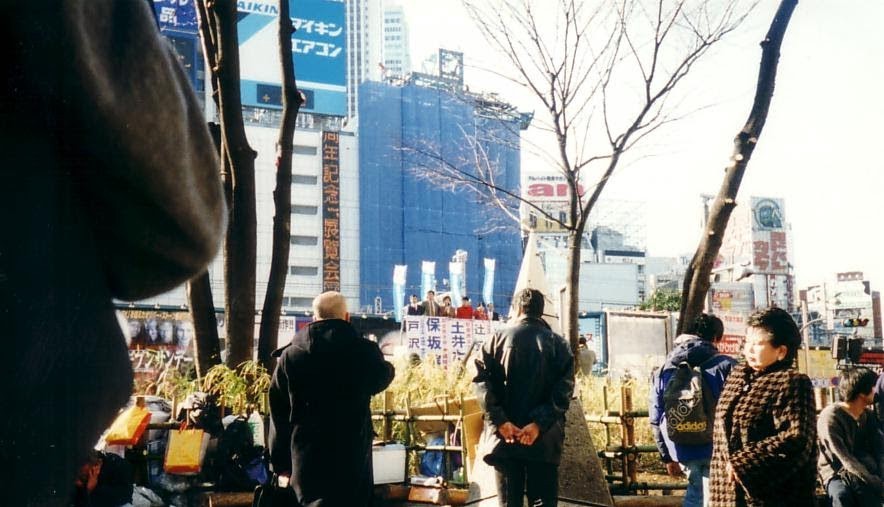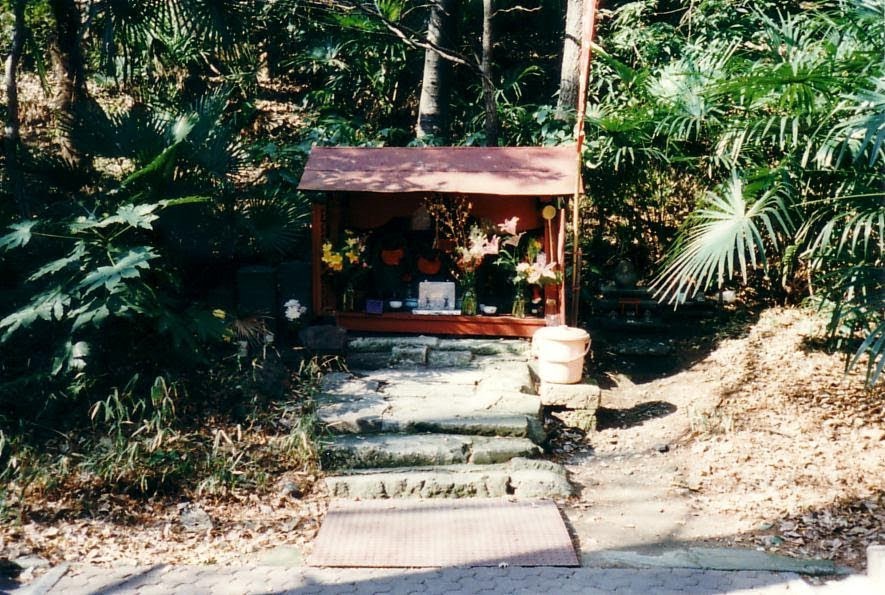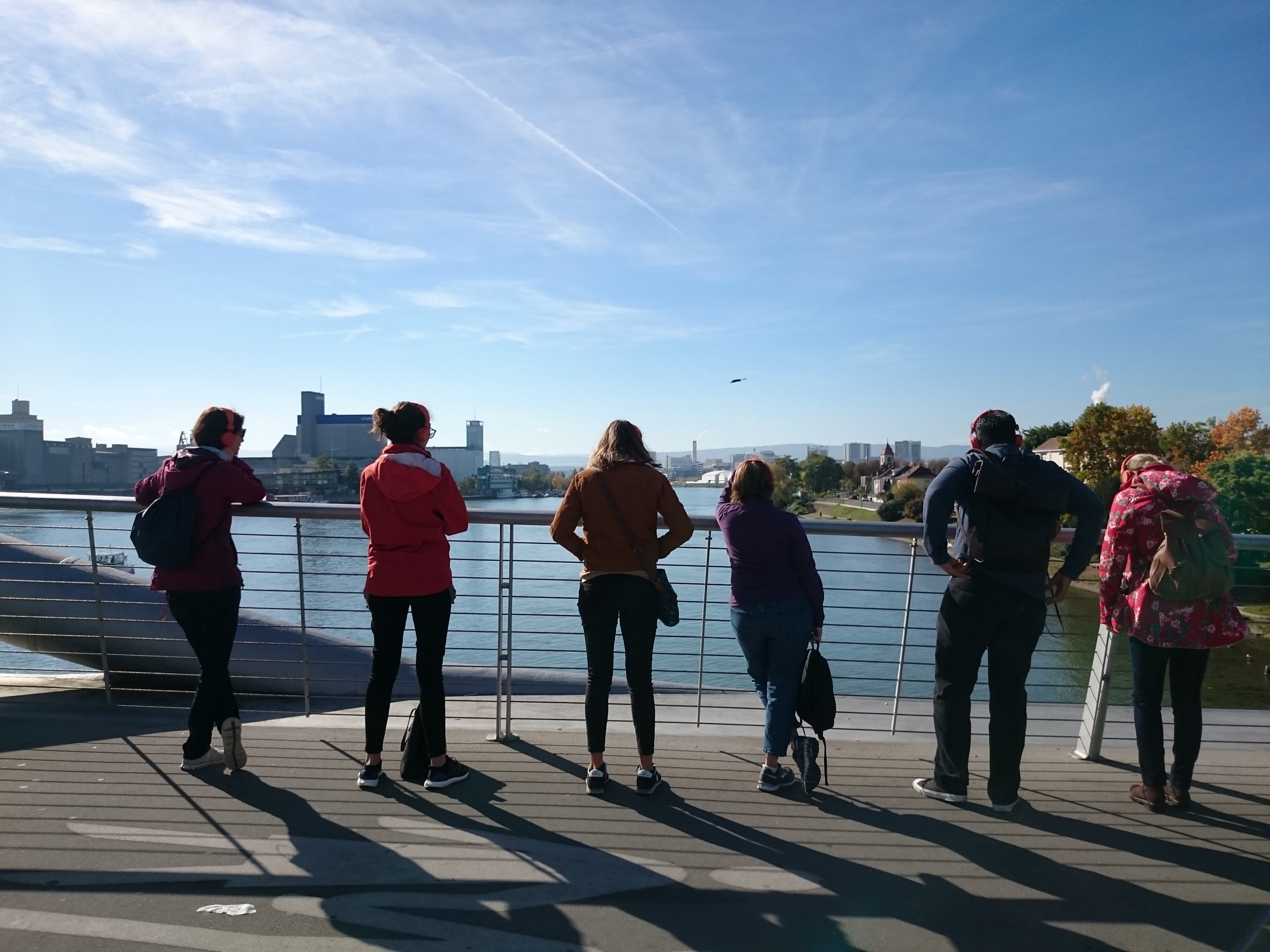Practice Entanglement
Download an experimental guide to practice entanglement.
See also
- Notes from practice
- Harman’s Speculative Realism in Ethnographic Methods
- Rezept zur situativen Faulheit
Practice Entanglement
This is a knot in a particular thread I followed for quite a while now. I’d like to share this knot with you as an entry point to a larger web of things I would love to keep present in the world.
This text is an attempt in wording out a narrative I follow to access the world. It’s about how I relate to the world or better said, how I am of relations within the world. It’s about embracing complexity and being able to experience the beauty of it.


How I got here
It probably started during a brief stay in Tokyo in the year 2000. We just hardly survived the millennium bug and I fulfilled one of my childhood dreams to visit Japan. My grandfather left me some Deutsche Mark, which I could dispose of when reaching 18. And that’s what I did. My best friend and I booked a flight and the first few nights in a hostel. Somehow I managed to mess about the timezone and booked one day to early. Of course they canceled our reservation, which we got to know when we arrived … they let us stay for one night anyway and what started was a wonderful micro odyssey through Tokyo.
One of the things that really fascinated me, was the local’s relationship to space. Next to be super clean and tidy I got the feeling, that spatial relationships are very personal and respectful. Especially in shared or public places. There was a small public place with a mini park in the middle near Shinjuku. It was just some fenced of gras, bushes and maybe three or four trees. Inside that mini park, there was a homeless person living in a cardboard hut. The person put the shoes outside of the fence next to a neatly packed away broom.
And then there were numerous encounters with those small hideaway shinto shrines. It was my first exchange with alien spirituality. Although my parents being atheists, I haven’t seen much else than christian culture by then. They fascinated me, I loved them. They felt like little places of shared embedding into the respective places of living and being. And I certainly had no vocabulary like that back then.
Animism
What followed was a very interested inquiry in the nature of animism. The notion to anthropomorphise the environment made a lot of sense to me. Starting out from simple acts of giving name to that you wish to interact with, out of fear or curiosity, to producing a full canon of characters which symbolise different aspects of what you encounter, humans tried to access the non-human and be with it.
A paganist once told me the following: Early farmers in the alps had their nature-culture divide the other way around. Nature was a unsteady, ever-changing danger and human settlements, especially the fireplace, was the eternal safe space. Most early animistic cultures had a dangerous vice-versa to deal with. Animism provided a kind of language or framework to do so.
A bit later I stumbled upon the paper of Nurit Bird-David: “Animism” Revisited: Personhood, Environment, and Relational Epistemology (DOI). The redefinition of animism, as found in this paper, was very inspiring. Animism is, simply said, a type of epistemology in where you are more interested in the relation to something then in the thing itself.
Relational epistemology within the context of animism means, that there is social practice with the environment or at least with the parts one deems to be of importance. It also means that personhood is constructed not out of yourself, but only in relationship to others. Something that is mirrored, in my understanding, by Rosi Braidottis nomadic subjectivity.
Bluntly, I don’t believe in spirits, souls and gods the least — not as concrete separate entities as they’re positioned within western religion. Everything else would be a lie. But I do believe, that language and aesthetics form us and form our access to the world. And this is the context within which animism has to be understood, when I use this term.
Multispecies Entanglement
In contemporary anthropology and philosophy (correct me if I’m wrong please) there has been a discourse, from the likes of Donna Haraway and Jane Bennett and to a lesser degree, for example by Timothy Morton and the OOO crew. The multispecies discourse is about the grander narrative of being. It’s not actively trying to be anthropo-decentric, as core OOO is, and focuses more on the entanglement of everything that is. The Multispecies Salon is a good entry point to get a grasp of the range of the field.
What is very important, I believe, is the fact that a lot of the multispecies discourse is championed by feminist thought. Staying with the Trouble by Donna Haraway has it’s heritage in her Cyborg Manifest, in which she tried to create new space for feminist positions by shifting and changing the techno-natural borders. Timothy Morton’s new book ‘Humankind’ has ‘ Solidarity with Nonhuman People’ as it’s subtitle and María Puig de la Bellacasa’s latest work is ‘Matters of Care: Speculative Ethics in More Than Human Worlds’.
The multispecies discourse is actually highly feminist, in it’s contemporary intersectional form, and political without the hitherto baggage of politics and theory. The multispecies discourse is looking at ontologies through whatever is touching us, humans, in one or another way. But let’s leave that for another time…
Walking
I had quite an intensive experience while working on a audiowalk for the Times of Waste project.
One of my favorites spaces along the audiowalk.One of my favorites spaces along the audiowalk.
- bitz über den audiowalk
- wo durch, was beinhaltet
- testing und guiding
- bitz über kinhin / walking meditation
Three views of a building during the audiowalk.Three views of a building during the audiowalk.




Recipe
The following is a simple approach to animistic, multispecies entanglement awareness practice through fostering relation to place. It is deeply inspired by the Eat Your Sidewalk Cookbook/Codebookof which I copied a small excerpt at the end of this text (Eat your Sidewalk Codebook Manifesto). If you feel touched by this text in any positive way, you should definitive get yourself a copy of the book. It’s awesome.
I also like to add four attitudes I found to be of beauty and importance that go hand in hand with this recipe. I have added quotes and sources to the end of this text (Entangling Attitudes).
- Vinciane Despret’s politeness
- Hannah Arendt’s go visiting
- Anna Tsing’s arts of noticing
- Minakata Kumagusu’s tact
Working this recipe will no yield a finished and polished result, something that is right or correct. Instead it intends to foster entangling ontology and relational epistemology. An emotional and aesthetic understanding that the world is a complex place and that you are always a accomplice in it and that being and knowing are also and always embodied.
practice_entanglement - original recipe.pdf
Pick a location. It doesn’t matter what or where it is. Stick with it for the duration of one go, which ends when you decide it. Your view on that particular location will change, you will change, the location will change.
- Mark one square meter and research what’s within. While doing so, reverse-engineer the threads of complexity. Think about, what was needed that everything is as it is now — including yourself.
- Make an inventory of the all the things you find. If you encounter the unknown, like plants or animals and insects, get to know them.
- What kind of power structures do the insects, stones and you share?
- Create and share stories of the location and with your people
- Regularly visit your location, has the inventory changed? You could try for 30 days, every day, for 15 minutes at the same time.
- Don’t only observe, try to interact with and to become part, be part of the location.
- Arrange the things you’ll find at the location. For example, sort all stones by size. What other non-destructive interventions can you think of? Is arranging already destructive? Is being there violence?
- Of course, there needs to be some fermentation going on: make a sourdough starter, sauerkraut or some kvass at your location. Give the local microbial world a change to enter the food your preparing by using cheesecloth as well as learning about bad molds
- Create a makeshift shrine for the location. Let the shrine be open for co-creation and -usage for everyone, human and nonhuman
- Leave the location for a long time. Return to it one day and treat it like a lost love or a 10$ bill you found in a pair of unwashed pants. Celebrate.
This recipe is by no means to be followed strictly nor is it finished. It’s a small thing, compared to what depth you find within the Eat Your Sidewalk Cookbook.
Now what
- But I do believe, that language and aesthetics form us and form our access to the world.
- Ich glaube, dass genau darin der Schlüssel liegt. Vielleicht kannst du das noch etwas ausbauen? Liegt darin nicht auch die Brücke zum Multispecies-Diskurs? Also dass wir, indem wir die Relationen in unserem Leben ändern, einen anderen Zugang zur Welt erhalten. Und darin eine Umbewertung dessen stattfindet, was in dieser Welt auftauchen kann und was es bedeutet. So verwandelt sich das Tier von einer Ressource in einen Gefährten, der der Sorge bedarf.
Entangling Attitudes
Vinciane Despret’s politeness
“Referring both to her own practice for observing scientists and also to the practices of ethologist Thelma Rowell observing her Soay sheep, Despret affirmed “a particular epistemological position to which I am committed, one that I call a virtue: the virtue of politeness.” In every sense, Despret’s cultivation of politeness is a curious practice. She trains her whole being, not just her imagination, in Arendt’s words, “to go visiting.” Visiting is not an easy practice; it demands the ability to find others actively interesting, even or especially others most people already claim to know all too completely, to ask questions that one’s interlocutors truly find interesting, to cultivate the wild virtue of curiosity, to retune one’s ability to sense and respond — and to do all this politely! What is this sort of politeness? It sounds more than a little risky. Curiosity always leads its practitioners a bit too far off the path, and that way lie stories.”
Haraway, Donna J.. Staying with the Trouble: Making Kin in the Chthulucene (Experimental Futures). Duke University Press.
Hannah Arendt’s go visiting
“Critical thinking is possible only where the standpoints of all others are open to inspection. Hence, critical thinking, while still a solitary business, does not cut itself off from ‘all others.’ To be sure, it still goes on in isolation, but by the force of imagination it makes the others present and thus moves in a space that is potentially public, open to all sides; in other words, it adopts the position of Kant’s world citizen. To think with an enlarged mentality means that one trains one’s imagination to go visiting.”
Hannah Arendt, Lectures on Kant’s Political Philosophy
Anna Tsing’s arts of noticing
Progress is a forward march, drawing other kinds of time into its rhythms. Without that driving beat, we might notice other temporal patterns. Each living thing remakes the world through seasonal pulses of growth, lifetime reproductive patterns, and geographies of expansion. Within a given species, too, there are multiple time-making projects, as organisms enlist each other and coordinate in making landscapes. The curiosity I advocate follows such multiple temporalities, revitalizing description and imagination. This is not a simple empiricism, in which the world invents its own categories. Instead, agnostic about where we are going, we might look for what has been ignored because it never fit the time line of progress.
Tsing, Anna Lowenhaupt. The Mushroom at the End of the World: On the Possibility of Life in Capitalist Ruins. Princeton University Press.
Minakata Kumagusu’s tact
“Things in the universe,” wrote Minakata, “naturally proceed smoothly without being conscious as long as one can apprehend the reasons for such things… . A discovery is … nothing but understanding things in the universe, as they are, through … encountering tact”. The formulation “as long as one can apprehend the reasons” (yoki kotowari ni sae tsukamaeatareba) implies both that one apprehends and that one is apprehended by reasons. Like a hunter wandering in a forest, tracing faint signs of game, tact entails trying to sense the “reasons” of nonhuman orders. To respond to the slightest sign, the hunter must wait while searching, all the while staying attentive to the motions and sounds of the world. Thus, tact can be seen as the limit point where that which one has consciously learned encounters worldly surprises that go beyond this learning. It concerns the cultivation of a receptive attitude toward the surprises of (nonhuman) things; even things that might lie hidden in plain view.
Jensen, C. B., Ishii, M., & Swift, P. (2016). Attuning to the webs of en: Ontography, japanese spirit worlds and the “tact” of Minakata Kumagusu. HAU: Journal of Ethnographic Theory, 6(2), 149–172. https://doi.org/10.14318/hau6.2.012
Eat your Sidewalk Codebook Manifesto
The following is taken from the Codebook.
A. GETTING ENTANGLED
- Walk your sidewalk everyday. Cross boundaries. Sense differently. Meet & dialog
- Identify & track: plants, animals, interactions, & patterns
- Begin within your body. Join with plants, animals, insects, fungi. & bacteria, via foraging, hunting & eating
- Re-distribute. Pickle, ferment, dry, smoke & can. Use processes, forces & capacities of abundance
- Work via consensus, & generosity
THE THREE REFUSALS
- Actively refuse pre-existing boundaries (begin w/ self)
- Refuse envisioning things as resources
- Avoid the ideological mindset of scarcity. Organize via plentitude (those pesky weeds)
B. ASSEMBLING
- Eating a Dandelion will help flourising. Let discoveries & curiosity lead
- Follow what you eat into new engagements
- Become dependent. (Make a fermented cider using your saliva & local fruit, for example)
- Give those who assemble a voice (bats, bees, bacteria…)
- What new processes, qualities & capacities emerge via these joinings? Try water + flour + your house = yeast (bread) = gift
- Make new tools (to dig, to cook, to share, to transplant, to co-produce with insects…)
- Use tools to activate & stabilize new qualities/possibilities
C. MAKING A PIRATE PROJECT
- Develop a Pirate (Pilot) Project. Start with your sidewalk
- Clear heavy metals with lambsquarter? Remove parking lots with knotweed? A monthly block dinner?
- Follow & change as the project changes & changes you
- Test & be generous. Take delöight in other’s projects
- Get multi-species feedback
- If it does not work? Celebrate & re-entangle
- Work directly with the others who are already working (with you)
- Develop a new language
D. THE EMERGENCE OF A COMMON(ING)
- Take into account what is emerging across these sidewalk network meetings
- Co-evolve intra-activity across meetings
- Work for & from these emergent relations
- Test & reinforce ways to hold these in common
- Sense the agency of your messy evolving sidewalk system, give it voice
- Celebrate often
- Don’t short circuit what’s emerging by defaulting to having
E. DYNAMIC EVALUATING
- Commons emerging = unfamiliar evolving boundaries
- Commoning: working within an emergent set of tolerances & evolving as a relational system
- Become (intra)dependent upon what emerges. Eating urban Geese could begin this
- Sense and respekt the dynamics of the common’s abilities (boundaries)
- Develop the common’s ability to shift through multiple states
- Collaboration & reciprocity = (emergent) agents evolve ways to live of a set of relations
- Multiply & celebrate different possibilities
- Respect, & test the limits of your commoning processes
- Develop a system of reciprocity (relationality) = the agents of the collective are accountable
- Transform governance to recognize your commoning
- Co-evolve with other emerging commons
- Keep eating your transforming sidewalk!
Taken from the Eat your Sidewalk Codebook by SPURSE CC BY-NC-ND 4.0